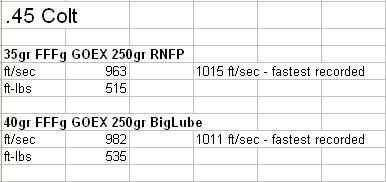I recently bought a conversion cylinder to convert my 44 caliber ball and cap reproduction Colt army pistols. The cylinder came with instructions to use only 'Cowboy" rated 45 long Colts cartridges in it. Will the cartridges fire safely from this pistol? I'm assuming the grain load of the powder is only 30 to 35 grains or less, right? Having ordered some ammo from a couple different vendors (Goex and Black Dawg) I'm wondering if only black powder cartridges should be used or can I use the "Cowboy" rated smokeless powder cartridges?
Any help out there?
Howdy sir. The cylinders built by both Kirst and R&D are made from 4140 tool steel and both are proof-tested to SAAMI specifications to chamber
low-pressure smokeless, or "cowboy action" loads that does not exceed 1,000 feet/per second velocity. If the box of ammunition says "Cowboy Action", it is safe to use in the conversion cylinder. Hornady, MagTech, Ultramax, Ten-X, and Black Hills all manufacture Cowboy Action ammunition.
Since your Colts are open-top by design, I will try to stay within the 650-800 FPS velocity margin to avoid damaging the recoil shield/frame.
DO NOT use any regular .45 LC defensive ammunition (*ahem, Taurus Judge *ahem), these are loaded close to .357 Magnum velocities and even though the cylinders might hold, the revolver will most likely be wrecked, and I am talking about a Remington/Beals closed frame design. With Colts, your barrel will likely fly off to the land of Oz and you will end up holding some kind of weird looking pepperbox. And these cartridges are usually loaded with jacketed ammo anyway, which is a no-no by itself in black powder barrels.
Me: I always load my own using brass, primers, black powder, and bullets that I purchase separately or make/cast myself. I use black powder only. Full-powered .45 LC ammunition loaded with black powder are very close in velocity and power to conventional cap-and-ball loads and I use these loads for hunting in my Remington Model 1858 Conversion and Model 1875 cartridge revolver. For Colts and other open-tops, I just suggest you load less to avoid stressing the frame.

